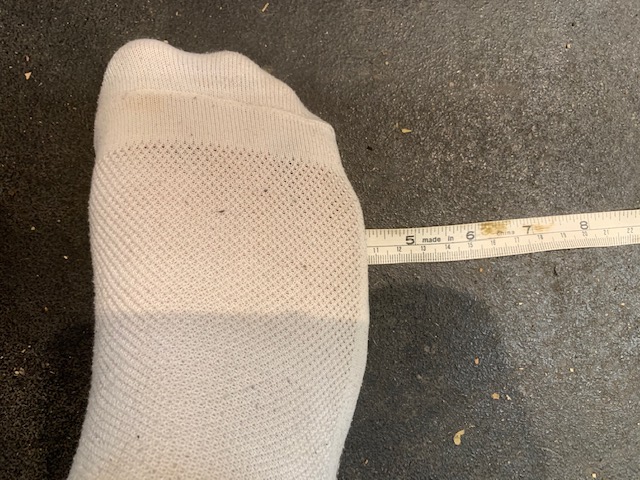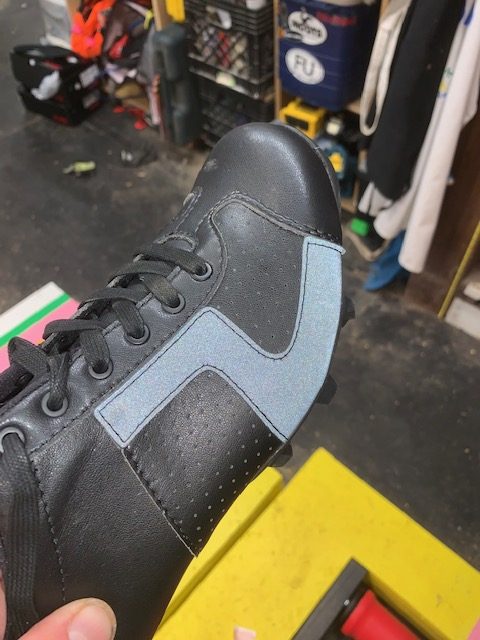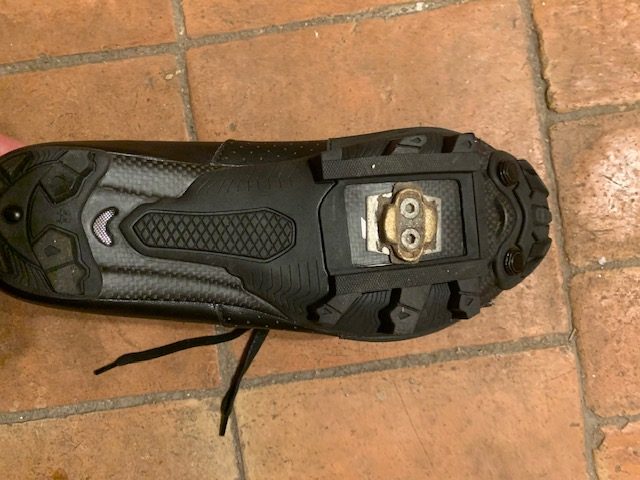111 millimeters isn’t really very much, when you think about it. Once upon a time, it was a long-travel fork; it’s about right for a paring knife blade; it’s slightly wider than a convenient piece of lumber.
In fact, it’s a rather bland dimension, one that is found throughout one’s daily life in a variety of places, from the mundane to the occasionally useful. When it’s the width of your foot, however, it can have a significant impact on your life. As a teenager, my shoes would split open along the sides, and loosening the laces enough left me little lacing to tie them. I gave up, and started wearing flip-flops as daily footwear, which I still do to this day. I wear them all year, including in deep snow (I’m good to about -10*F, then I put on socks). The pain of frozen feet is much preferred over the pain of foot-binding.
My feet are wide. Fred Flintstone wide, barefoot waterskier wide, snowshoe hare wide. When I see skiboot manufacturers brag about the width of their boots at 103mm, I shake my head, knowing that I won’t get my foot into the cuff. Skiing and cycling footwear has meant one thing for me for my entire life: pain.

Skiboots create the interesting sensation of having my foot folded in half, lengthwise, like a taco. I’ve always worn bootshells a size or two larger than the bootfitters recommend (those sadistic freaks seem to take great delight in trying to make me cry). There may be some extra space in the front of my toes, and my forefoot buckles may be essentially unbuckled, but I can usually make turns for a whole day before the pain of origami sends me for a beer or three. It’s been this way for decades; the much-maligned Salomon SX-90 skied horribly, but had volume. Since its demise in the Reagan era, I have yet to find anything that holds my hoofs so comfortably.
When cycling, the suffering starts with a sensation of heat, usually on the outboard side of my foot. After a short while, my entire foot feels like it’s in hot coals. This typically sets in after about 2 hours, and by the time the ride ends, the pain can be excruciating. I’ve tried lots of shoes, most rumored to be “High Volume” or “Wide”, but but these adjectives seem to be in comparison to a toothpick or knitting needle.
Shoes reputed to be wide, such as Sidi Megas, Gaerne, Northwave, Shimano, and Specialized have never worked for me. Some had Boa dials, some had Velcro straps, some had laces, and all could be made to fit, but none fit well. Each had compromises, despite their quality, and generally high prices. I knew Bont and Lake offered wide lasts, but the nearest dealers were hundreds of miles away, so I had no opportunities to try them on. For a couple of seasons, I used Giro lace-up shoes because the laces allowed me to open the shoe pretty wide. They weren’t a great solution, but they delayed the burning sensation better than my previous shoes.
I found a pair of Lake CX237 road shoes at my local outdoor consignment shop, brand new, and as the shop cleared stuff out for winter, marked down from $300 to $45. I slipped a foot inside, and realized that my foot was not hanging over the edges of the last. It was a revelation, as well as a good deal.
As winter progressed and timing, weather, work, and family obligations only allowed me a couple of days a month outside on the fat bike, I wore these new shoes while spinning away in the basement. I was very happy, and my feet, even moreso. The wide carbon last felt good under the widest part of the foot, and the volume of the shoe was comfortable, even with my custom orthotics inside.

As pleased as I was with the Lake road shoes, the smooth carbon soles wouldn’t work for mountain/gravel/travel, so I contacted Lake to ask what they offered in lace-up shoes. They suggested the MX 1, which comes in several widths and variations. I selected the carbon-soled, microfiber fabric version. Lake also offers a non-carbon sole for a lower price, so I bought a pair for my son, who suffers from wide feet also. I didn’t spring for the carbon soled version for him because 1) at 95lbs the soles are plenty stiff, 2) he’ll outgrow them in a few hours, and 3) he can buy his own carbon soles when he gets a job. 
The wide last fit my flippers very well, and the microfiber fabric, which is not really described in any detail on their site, proved to be quite water-resistant on the first few rides I did. The shoe has a Z-shaped reflective strip on the sides, and soft-ish rubber lugs on the carbon last. My previous shoe, a Giro VR-90, had a similar construction, with Michelin rubber soles on an Easton last. I found the Giro’s Michelin rubber to be a bit hard, and slippery on cafe floors. The Lake rubber is more forgiving on slick, hard surfaces. I will have to wait for summer to see how durable it is as a mountain bike sole.

Build quality of the shoes is quite nice. The laces are wide and flat, and do not move much through the shoe eyelets. I like lace-up shoes because I can tune each eyelet pair to a comfortable width, and these laces seem to stay put. To get my foot in and out, I only opened the top two laces. The tongue of the shoe has a loop of elastic for trapping the bows and keeping them out of your pedal spindles. The loop, like the tongue, is black, and at first I didn’t notice it.
While they have threaded inserts, they do not ship with toe spikes. If you need these for hike-a-bike and cyclocross, plan on buying aftermarket spikes or using a set from a previous pair of shoes.
Over the span of 3 days of riding with my son, we covered about 120 miles of road. There was no hike-a-bike, and the only walking we did was in-and-out of coffee shops and up our hotel stairs. Riding after the tail-end of a heavy winter rain storm, we had quite a bit of road spray off the front tires, but no direct downpours. The fabric did a very good job of resisting the wheel’s spray, and my feet stayed dry inside the shoes. Road dirt and grime wiped off easily. I’m sure that in a downpour, they would show some signs of resistance, but I wouldn’t count on them for waterproofness, particularly since the leather is perforated. That said, they don’t soak through immediately.
The bit of walking that we did was comfortable, and the rubber lugs covered the cleat so we didn’t sound like Lycra-clad tap-dancers. There is enough rocker to the sole that they don’t clop toe-to-heel like a skiboot, and I think they are a good shoe for tourism. We use Crank Brothers pedals, and the shoe-shields worked well to space the cleat properly for the pedal.
The soles have small vents under the forefoot and heel, which did not seem to pick up any water from the road. I will have to wait for summer temperatures to see if they actually cool the shoe, but as they are located under my footbed’s thermoplastic base, I doubt it.
Lake’s website has a fair amount of information on how to measure your feet, and as a point of comparison to my new slippers, I followed the instructions to derive my size. I certainly had the correct last, but the site was recommending a shoe about 2 sizes shorter. These 44.5s were just right, with my big toes barely brushing the end. By contrast, the site was accurate for my son’s feet (although I still upsized him for a few more minutes of use). Lake offers several widths, from ‘normal’ to ‘mutant’, so read carefully to make sure you find the correct combination of shoe and last to fit your foot. If you can try them on, do. Their web sizing guidelines are just that- a guide, not a substitution for actually trying them on.

One Reply to “Lake MX-1 Wide Cycling Shoe Review”
Comments are closed.